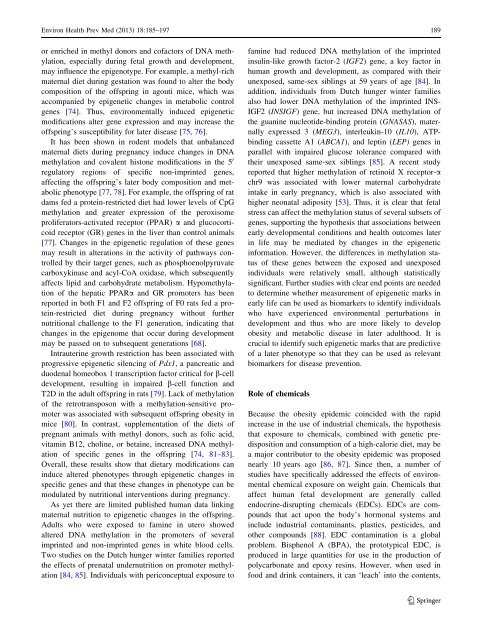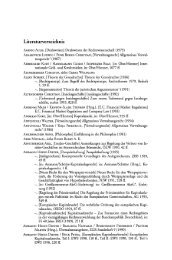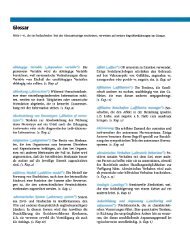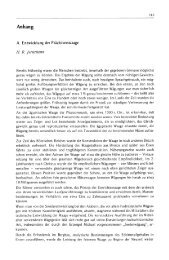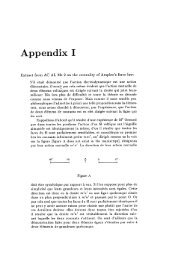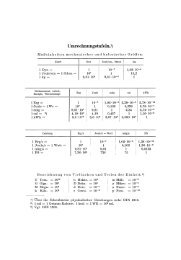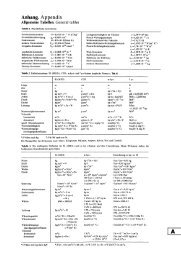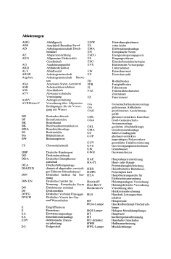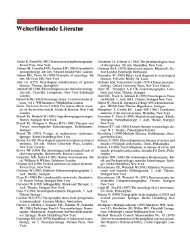Download PDF - Springer
Download PDF - Springer
Download PDF - Springer
You also want an ePaper? Increase the reach of your titles
YUMPU automatically turns print PDFs into web optimized ePapers that Google loves.
Environ Health Prev Med (2013) 18:185–197 189or enriched in methyl donors and cofactors of DNA methylation,especially during fetal growth and development,may influence the epigenotype. For example, a methyl-richmaternal diet during gestation was found to alter the bodycomposition of the offspring in agouti mice, which wasaccompanied by epigenetic changes in metabolic controlgenes [74]. Thus, environmentally induced epigeneticmodifications alter gene expression and may increase theoffspring’s susceptibility for later disease [75, 76].It has been shown in rodent models that unbalancedmaternal diets during pregnancy induce changes in DNAmethylation and covalent histone modifications in the 5 0regulatory regions of specific non-imprinted genes,affecting the offspring’s later body composition and metabolicphenotype [77, 78]. For example, the offspring of ratdams fed a protein-restricted diet had lower levels of CpGmethylation and greater expression of the peroxisomeproliferators-activated receptor (PPAR) a and glucocorticoidreceptor (GR) genes in the liver than control animals[77]. Changes in the epigenetic regulation of these genesmay result in alterations in the activity of pathways controlledby their target genes, such as phosphoenolpyruvatecarboxykinase and acyl-CoA oxidase, which subsequentlyaffects lipid and carbohydrate metabolism. Hypomethylationof the hepatic PPARa and GR promoters has beenreported in both F1 and F2 offspring of F0 rats fed a protein-restricteddiet during pregnancy without furthernutritional challenge to the F1 generation, indicating thatchanges in the epigenome that occur during developmentmay be passed on to subsequent generations [68].Intrauterine growth restriction has been associated withprogressive epigenetic silencing of Pdx1, a pancreatic andduodenal homeobox 1 transcription factor critical for b-celldevelopment, resulting in impaired b-cell function andT2D in the adult offspring in rats [79]. Lack of methylationof the retrotransposon with a methylation-sensitive promoterwas associated with subsequent offspring obesity inmice [80]. In contrast, supplementation of the diets ofpregnant animals with methyl donors, such as folic acid,vitamin B12, choline, or betaine, increased DNA methylationof specific genes in the offspring [74, 81–83].Overall, these results show that dietary modifications caninduce altered phenotypes through epigenetic changes inspecific genes and that these changes in phenotype can bemodulated by nutritional interventions during pregnancy.As yet there are limited published human data linkingmaternal nutrition to epigenetic changes in the offspring.Adults who were exposed to famine in utero showedaltered DNA methylation in the promoters of severalimprinted and non-imprinted genes in white blood cells.Two studies on the Dutch hunger winter families reportedthe effects of prenatal undernutrition on promoter methylation[84, 85]. Individuals with periconceptual exposure tofamine had reduced DNA methylation of the imprintedinsulin-like growth factor-2 (IGF2) gene, a key factor inhuman growth and development, as compared with theirunexposed, same-sex siblings at 59 years of age [84]. Inaddition, individuals from Dutch hunger winter familiesalso had lower DNA methylation of the imprinted INS-IGF2 (INSIGF) gene, but increased DNA methylation ofthe guanine nucleotide-binding protein (GNASAS), maternallyexpressed 3 (MEG3), interleukin-10 (IL10), ATPbindingcassette A1 (ABCA1), and leptin (LEP) genes inparallel with impaired glucose tolerance compared withtheir unexposed same-sex siblings [85]. A recent studyreported that higher methylation of retinoid X receptor-achr9 was associated with lower maternal carbohydrateintake in early pregnancy, which is also associated withhigher neonatal adiposity [53]. Thus, it is clear that fetalstress can affect the methylation status of several subsets ofgenes, supporting the hypothesis that associations betweenearly developmental conditions and health outcomes laterin life may be mediated by changes in the epigeneticinformation. However, the differences in methylation statusof these genes between the exposed and unexposedindividuals were relatively small, although statisticallysignificant. Further studies with clear end points are neededto determine whether measurement of epigenetic marks inearly life can be used as biomarkers to identify individualswho have experienced environmental perturbations indevelopment and thus who are more likely to developobesity and metabolic disease in later adulthood. It iscrucial to identify such epigenetic marks that are predictiveof a later phenotype so that they can be used as relevantbiomarkers for disease prevention.Role of chemicalsBecause the obesity epidemic coincided with the rapidincrease in the use of industrial chemicals, the hypothesisthat exposure to chemicals, combined with genetic predispositionand consumption of a high-calorie diet, may bea major contributor to the obesity epidemic was proposednearly 10 years ago [86, 87]. Since then, a number ofstudies have specifically addressed the effects of environmentalchemical exposure on weight gain. Chemicals thataffect human fetal development are generally calledendocrine-disrupting chemicals (EDCs). EDCs are compoundsthat act upon the body’s hormonal systems andinclude industrial contaminants, plastics, pesticides, andother compounds [88]. EDC contamination is a globalproblem. Bisphenol A (BPA), the prototypical EDC, isproduced in large quantities for use in the production ofpolycarbonate and epoxy resins. However, when used infood and drink containers, it can ‘leach’ into the contents,123


